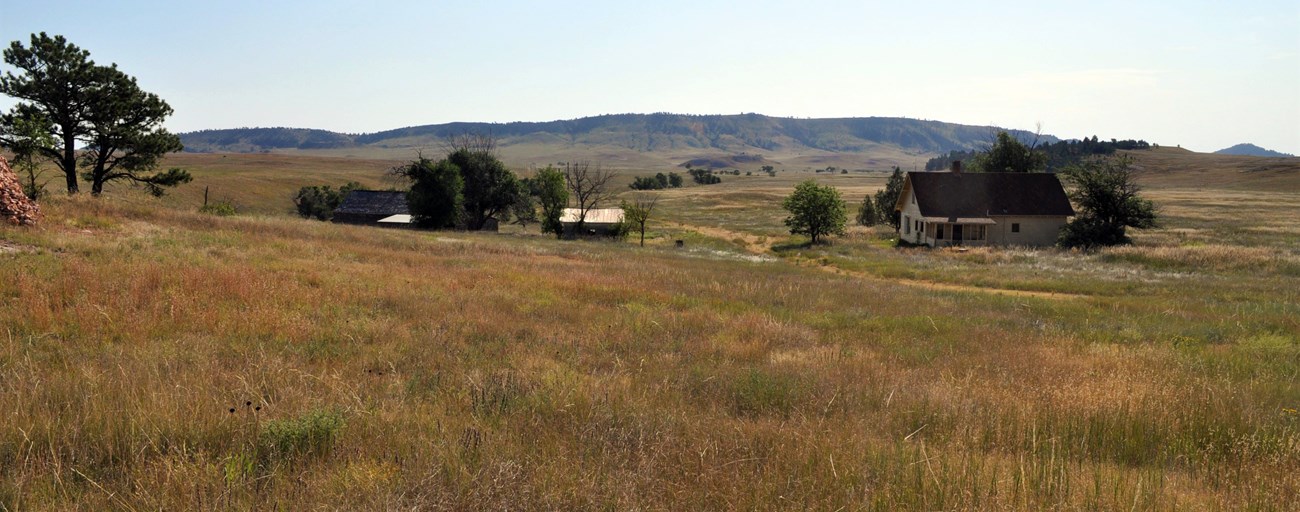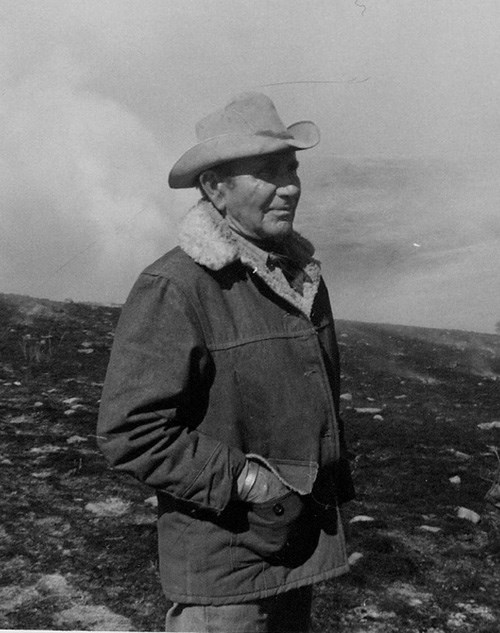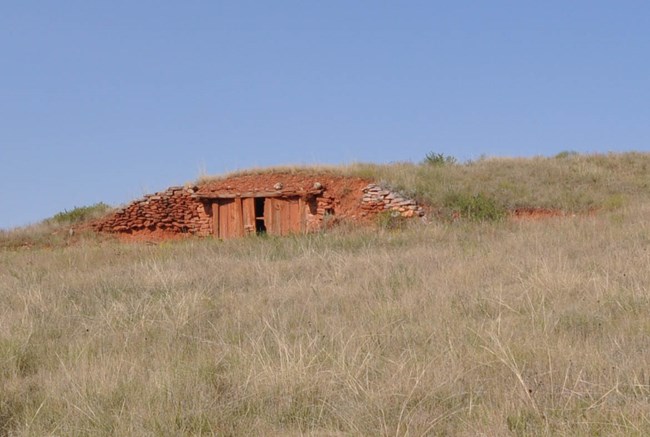
NPS Photo / Tom Farrell The prairie is a harsh environment. Extreme variations of temperature, moisture, and wind are always present. To eke out a living on the prairie one must be ready to meet these conditions head on, and Carl Sanson was the type of person to do just that. He and his family successfully homesteaded a large plot of land that is now part of Wind Cave National Park. Ranching in the Black HillsRaising cattle was the major focus of ranching in the Southern Black Hills in the 1870s and 80s. Many large cattle ranches sprang up near the then thriving town of Buffalo Gap. The topography of the Southern Hills provided less severe winter conditions and promoted more robust livestock. The arrival of the railroad in Buffalo Gap in 1885 allowed these hardy cattle to be shipped to eastern and European markets. During these years cattle ranching flourished and then, just as quickly, collapsed. The seemingly endless prairie grasses were not endless. Too many cattle grazing in too little space and catastrophic weather incidents depleted the land. 
Photo by Dean Shiltz August Sanson started his homestead in 1882. In 1916 Carl, at the age of 15, took over for his ailing father. Throughout the years they adjusted to the ever-changing prairie and fluctuating financial markets. When the rains stopped coming, they adjusted. Often times in dry conditions, they and their neighbors moved their cattle to other ranges - some on the Pine Ridge Reservation and some as far away as the Badlands. Community SupportTo survive on the frontier you not only needed tenacity, you needed a support community, and the local community was an important part of the Sanson story. In his memoir, Sanson wrote "Like any business, the ranching business has many problems that had to be solved the best way we could. …The neighbors were always ready to help anyone anytime; your troubles were their troubles. There couldn't be a better neighborhood anywhere. We always helped each other - if we didn't, a lot of us wouldn't have survived this frontier country." Tough TimesDry years brought not only a depletion of the range, but dangers of prairie fires and the Sanson Ranch experienced two of them. In 1910 the Sanson home burned and the family lost everything. Much of the forested area of the ranch was burned in 1964. In 1982 Sanson lamented that that the timber was just coming back, but would not get big enough for corral poles in his lifetime. 
NPS Photo / Tom Farrell Remaining BuildingsThe surviving buildings of the Sanson Ranch represent a way of life in Western South Dakota at the beginning of the 20th century. The barn demonstrates how each building had a specific purpose and was utilized to make the most of the modest supplies available. Various outbuildings show that a working ranch is more than just taking care of livestock before shipping them to market. 
NPS Photo / Tom Farrell Sanson faced many hardships while ranching in the southern Black Hills ranging from terrible weather events to fires to personal tragedies. Sanson is one of the many hopeful settlers who dreamt of carving a living out of the Black Hills and managed to succeed. |
Last updated: December 5, 2023
